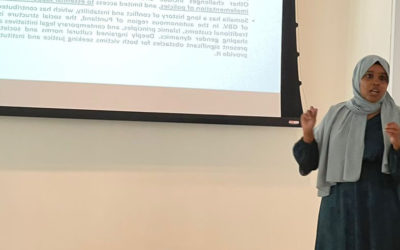Amid the global chaos of 2020, a convergence of economic and social forces is occurring that presents new opportunities for financing of chronic public health challenges in low- and middle-income countries (LMICs). Widespread health system weaknesses made visible by the COVID-19 pandemic, rapid advances in digital health technologies, and the fast-growing interest of private equity investors in generating positive social impact with their investments, are creating new pathways for private capital to participate in meaningful and scaled global health innovation.
A Digital health revolution is coming of age
Today, the idea that health systems need strengthening and that healthcare expenditures must be prioritised is increasingly obvious to the general public and to business and financial leaders. One clear pathway to transform health care delivery is by scaling digital health technologies, including telehealth services, point-of-care diagnostics, mobile monitoring, informatics, and AI-enabled supply chain logistics. Advances in digital health-related innovations have caught the attention of private sector investors because they present opportunities to improve clinical care and realise commercial success. While most of these successes have been in developed markets, the potential to leap-frog over sclerotic health access and equity problems in emerging markets is arguably more significant, in terms of health and economic benefits to thousands of communities and millions of people.
Impact investing trends are being fueled by the COVID pandemic
The COVID pandemic and the increasingly obvious environmental and social consequences of climate change are also fueling the rapid growth trajectory of impact investing — the practice of making investments with the intent to achieve a “double bottom line” — financial return + positive social impact. The origins of impact investing (a term linked to and often used interchangeably with “sustainable financing”) can be traced back 20+ years to the advent of micro-finance programs benefitting small entrepreneurs by providing access to working capital through small loans. But in the last 5 – 7 years, the selection of financial instruments to support impact investments has grown in scale and sophistication, spawning a fast-expanding ecosystem of impact investment management firms and consultants, new financial institution and government funding initiatives, and an array of bonds, funds and blended finance mechanisms. They are all designed to expand the field of financial actors willing to commit capital to investments that prioritise social and environmental development objectives, while continuing to generate financial return for investors.
In 2019, assets under management in the impact investment class were estimated to be U$521 billion[i]. This is a small drop in the bucket of the $200 trillion currently circulating in capital markets, but there is encouraging data and multiple social indicators of a growing momentum towards impact investment strategies. According to a recent USAID report on private capital’s role in achieving the Sustainable Development Goals. “Impact investing has been buoyed by the Millennial and Gen X generations, 77% and 72% of whom have made some form of impact investment respectively, compared with just 30% of affluent donors in the Baby Boomer and older generations.”[ii] The societal changes driving these generational trends in investor behaviors are global, and mirrored in European and Asian investor communities. The COVID-19 pandemic has only increased a sense of urgency among these influential holders of capital.
Nimble, private equity investors are particularly well suited to meet the demand for working capital in the so-called “missing middle” – small companies and entrepreneurs in need of $50,000 to $5 million to incubate their innovations and bring them to market. It is these small innovators, willing to take risks and adapt their technologies and business plans to lessons learned in the market, that lead or ignite change in stagnant sectors of an economy. While the struggle to find capital to support the missing middle is a global condition, it is far more acute in LMICs, where venture capital and private equity investors with an appetite for risk are scarce.
Private capital’s place at the global health table
Successes have been realised in catalysing private capital impact investments into small and medium-sized companies in LMICs in several sectors, including those combatting climate change (SDGs 13, 14, 15), gender equity (SDG 5), renewable energy (SDG 7) and agriculture (SDG 12, 15). But similar progress on new private capital funding mechanisms for health funding (SDG 3 Health & Well-Being for All) have been slower to develop. The health lag can be attributed to three dominant factors:
- a lack of in-house expertise with which investors can evaluate health technologies and emerging market risks and benefits
- a lack of health-focused impact investment funds with flexible time horizons and hurdle rates
- the lack of convening and curating platforms on which investors can learn about markets and be matched with qualified investees.
The estimated annual funding needed to achieve SDG 3 goals by 2030 is $371 billion[iii]. Official Development Assistance (ODA) for health-related initiatives globally is just $140 billion annually (and this figure has plateaued for the last 5 years, and is not projected to increase). This leaves a $230 billion annual gap in the projected funding necessary to achieve fundamental planetary health goals including, reduction of maternal mortalities, ending preventable deaths of children < 5-years old, assuring essential medicines and vaccines access for all, ending major infectious disease epidemics, and improving health system responsiveness to global threats, among others.
Private capital can play a significant role in bridging this gap. Seeding capital to entrepreneurs with LMIC-focused innovations today has the potential to transform health access, affordability and acceptability for millions tomorrow.
JAMES W. BAIR, SDGI’19
Partner/Managing Director, Baraka Impact Finance
jbair@barakanetworks.com
barakaimpact.finance
Internship offer – Development of Health, Innovation, Investee Pipeline (part-time) – Baraka Impact Finance
[i] Global Impact Investors Network, Annual Impact Investor’s Survey 2020
[ii] USAID, Unleashing Private Capital for Global Health Innovation, April 2019
[iii] IISD, SDG Knowledge Hub, https://sdg.iisd.org/news/who-estimates-cost-of-reaching-sdg-health-targets/ September 2017









0 Comments